



The Porsche 917 was one of two new cars added to the Grand Prix Series in 1970.
The
real Porsche 917 was the brainchild of Ferdinand Piech, Ferry Porsche's
nephew. His goal was simple: win Le Mans! From the start,
the plan was to
build a very light car in order to be able to be competitive with the
powerful Fords and
Ferraris. However, Porsche's new flat-12 engines performed far
above expectations and the
917s, when initially tested in early 1969 were amazingly fast! In
April
1969, the first Le Mans test run was taken. On one stretch, the
917 was clocked at 216
mph! However, although the 917 was a very fast car, it wasn't
particularly quick
around a full lap. Handling and control was poor through the fast
corners. To solve
this problem, small adjustable spoilers were fitted to the rear of the
car. Although
three 917s were entered in the 1969 Le Mans race, none finished.
It was a different story
in 1970-71. Of the 21 races the 917 ran in during those two
seasons, it recorded 14
wins and two 2nd place finishes. This included 1-2 finishes at
both the 1970
and 1971 Le Mans. In the 1971 Le Mans race, the winning 917 set a
record for laps
completed that stands to this day. Later versions of the Porsche
917 were highly
successful, culminating in a world speed record of over 250 mph set by
Mark Donahue in 1975 on a
straightaway of the Talladega Motor Speedway.
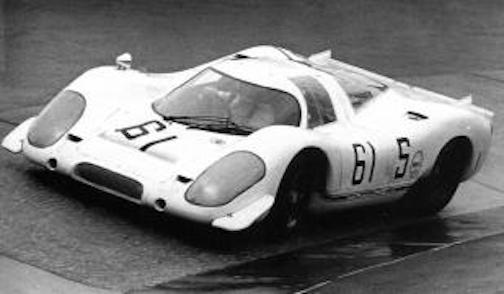
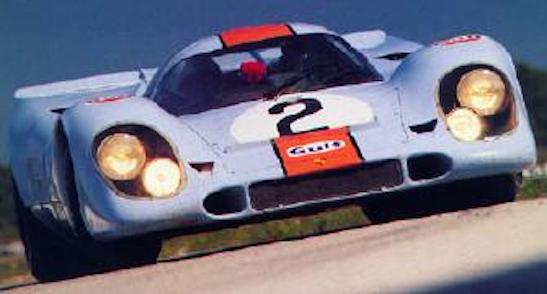
At
left, an early Porsche 917; at right, a Porsche 917 about to win the
1970 Daytona 24 Hours.
The
Hot Wheels version of the Porsche 917 is a beautiful reproduction of
the early Porsche 917. The car featured a wrap-around windscreen
and a rear
hatch that included a triangular window over the flat-12 engine.
Unlike the
1969 Grand Prix cars, the Porsche 917 had a black-painted tail light
panel and
red-painted tail lights. Blister packs included a sticker sheet
with "18" racing numbers and
rocker panel stripes with the word "Porsche".

A pair of HK Porsche 917 in
Spectraflame red and aqua.
The Porsche 917 was
produced in various
Spectraflame colors, as well as in grey enamel. Porsche 917s
were
made at both the US and HK
plants. Cars produced at the US plant featured a clear
windscreen, white
interior, and a flat black- painted tail light panel. HK cars
have a blue-tinted
windscreen, brown or black interior, and a gloss black-painted tail
light panel. HK cars are marked "Hong Kong" on the rear of the
base. As
with all 1970 cars, Porsche 917s have cap style wheels, with
medium-sized
wheels all around.
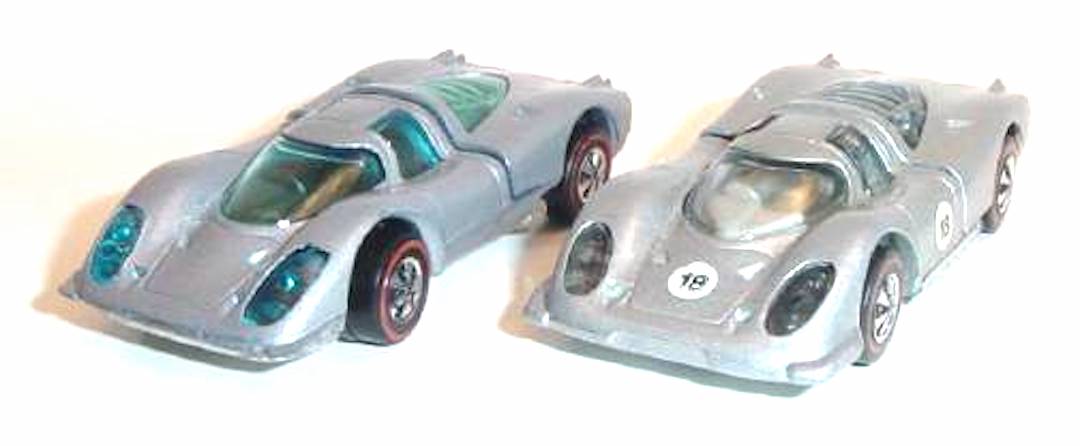
Grey enamel HK and US Porsche 917s.
The
Porsche 917 can
be found in some of the first generation colors and is common in most
of the
second generation colors. See the chart below for a complete
list. Whereas
the 1969 Le Mans and CanAm cars can be found in many US colors and a
few HK colors, the 1970 cars like the Porsche 917 were made in many
colors at both plants. In fact, for the 917, most colors were
done by both
plants! For whatever reason, some colors are much more rare
than
others. Interestingly, colors that are rare on non-existent for
the 917 (e.g. orange, HK
purple) are not rare for the other 1970 Grand Prix car, the Ferrari
312P.

US/HK Porsche 917 "color pairs": light
green, lime and yellow.


The
Porsche 917 was re-issued in 1974 with racing tampos. For more
information, please see the Flying
Colors page.
Porsche
917 Color chart
| US COLORS: |
COMMENTS: |
| grey enamel |
common |
| light green | common |
| magenta |
common |
| lime | |
| hot pink |
|
| rose | |
| yellow | |
| salmon | |
| red | hard to find |
| green | hard to find |
| blue | hard to find |
| aqua | rare |
| HK COLORS: | |
| blue | common |
| light green |
common |
| grey enamel |
|
| lime | |
| green | |
| yellow | hard to find |
| red | hard to find |
| pink |
hard to find |
| aqua | rare |
| purple | rare |
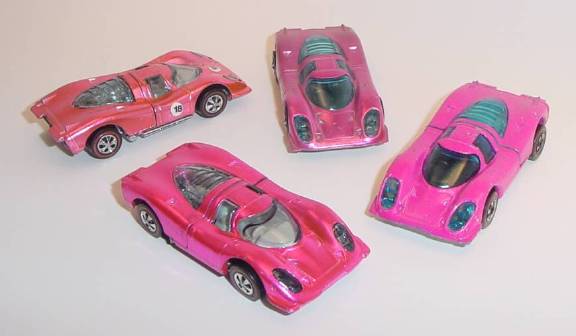
Pink 917s, clockwise from bottom: US
hot pink, US salmon, HK pink, '73 enamel.
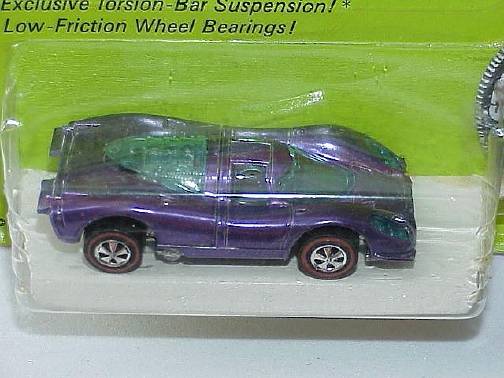
How's this for rare? A purple
HK Porsche 917 still in the blister!

US
(front row) and HK (back row) Porsche 917 rainbows!